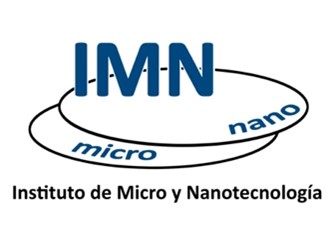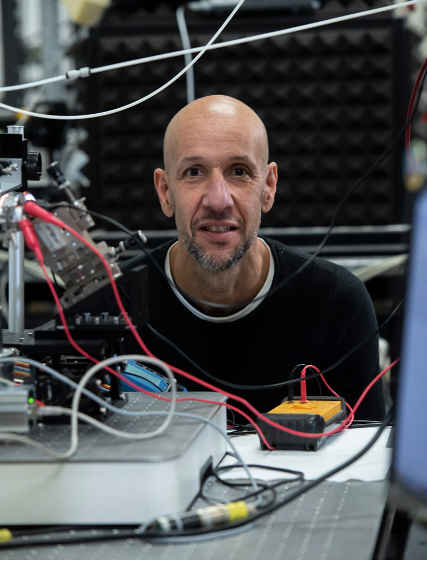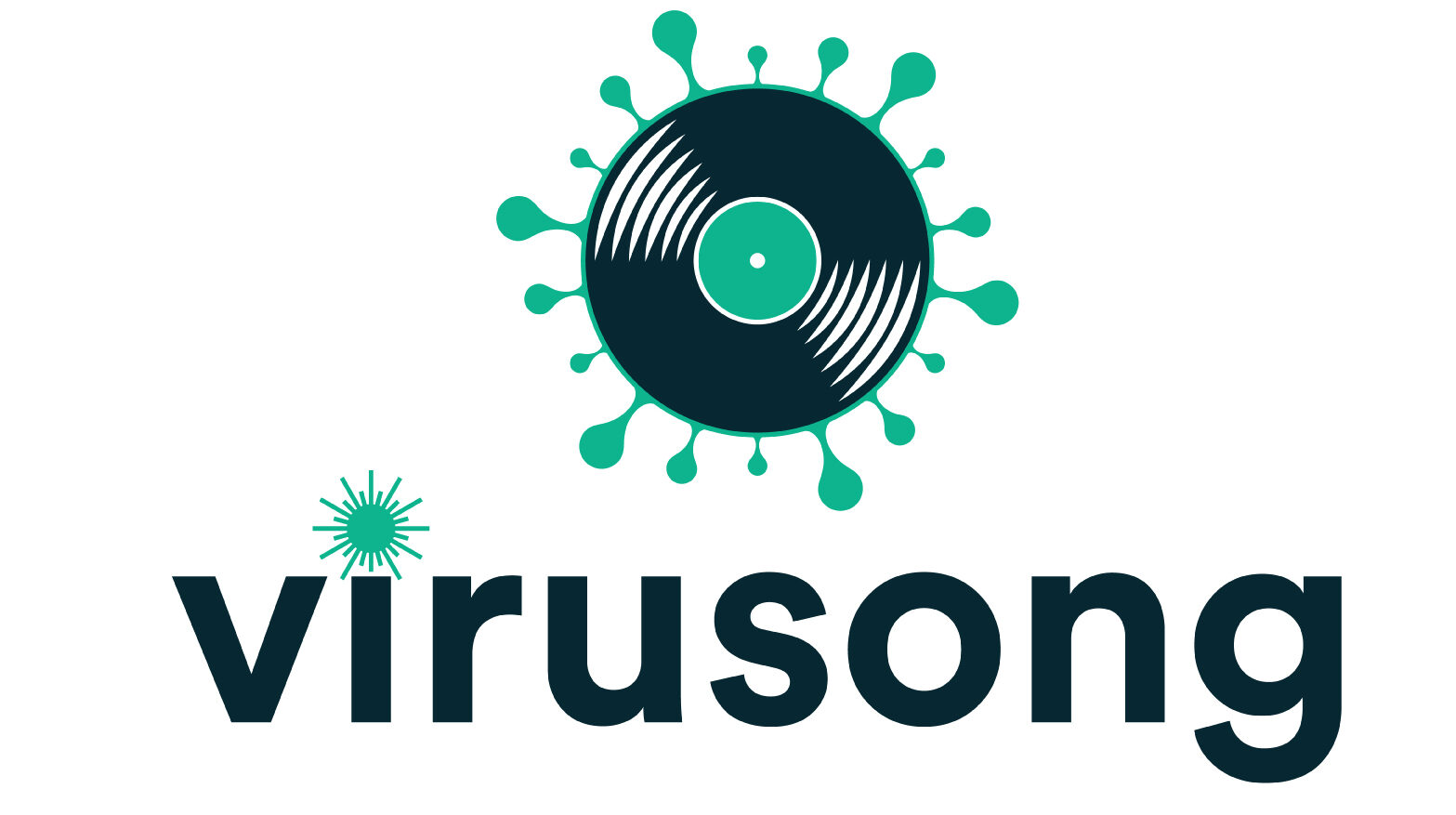
Biomechanics group
The Bionanomechanics Group develops ultra-sensitive analytical tools for biomedicine inspired by unique phenomena occurring at the boundary between optics and mechanics at the micro- and nanoscale. The group’s research ranges from the discovery of new physical phenomena in bio-interfaces to their technological exploitation for a relevant biomedical problem. The group has expertise in physics, optical instrumentation, biofunctionalization, mechanobiology and biophysics. The group’s interest in recent years has been increasingly oriented towards the early detection of cancer and viral infections. The scientific results of the group have been pioneering in its research area establishing new scientific directions in the field of nanomechanical biosensors, early detection of diseases and mechanobiology.

Javier Tamayo
Dr. Javier Tamayo, PhD in Physics in 1998. Postdoctoral Marie Curie fellow at the University of Bristol (UK). Full Professor CSIC. Royal Spanish Physics Society RSEF award in “Física, Innovación y Tecnología” 2018. His research is focused on the development of physical technologies, in particular nanomechanics and optomechanics, for their application in ultrasensitive molecular detection and cellular mechanobiology. He has successfully proposed and developed disruptive concepts at the boundary between physics and biology, such as the identification of biophysical markers for cancer mechanobiology (ACS Nano 2016, 10, 3365, ACS Sens. 2019, 4, 12, 3325) and for the detection of pathogenic organisms (Nature Communications 2016, 7, 13452, Nature Nanotechnology 2020, 15, 469); or the use of a new concept of hybrid opto-mechano-plasmonic biosensor device for the detection of minute concentrations of tumor biomarkers, with a detection limit of 100 ag/mL, exceeding existing technologies by several orders of magnitude (Nature Nanotechnology 9, 1047 (2014), Nat. Nanotech News & Views 9, 959 (2014) )). He has also developed pioneering works that allow for the first time a mass and stiffness spectrometry with nanomechanical sensors (Nature communications 7, 13452, 2016) and the detection of the intrinsic modes of vibration of an individual bacterium, as proof of concept of a new vibrational spectrometry of intact living organisms (Nat. Nanotechnol. 2020, 5, 641). These results open the door to direct, high-throughput biophysical identification of viruses, bacteria, fungi and human cells. He has coordinated a FET-Proactive-RIA project (2016-2022) funded with more than 7 million euro.

Montserrat Calleja
Dr. Montserrat Calleja, Ourense, Spain, 1973, full professor at CSIC (Researcher ID: B-7857-2014). 15 registered patents, more than 90 indexed articles. Leader of more than 17 national and international projects, including two prestigious ERC Grants (StG and CoG) and two ERC-proof of concept projects. Miguel Catalán research prize for researchers under 40 years of age in 2012. Mas + award in 2018 and CSIC-Quo Selección de la ciencia award in 2018. Rei Jaume I award 2022 in New Technologies. Calleja began her research career in 1997 on the subject of AFM nanolithography. Her thesis received the extraordinary doctorate prize from the University of Santiago de Compostela. After PhD, her scientific interests derived towards the development of sensors based on nanomechanics. As a postdoctoral Marie-Curie granted researcher at the Technical University of Denmark-Mikrolektronik Centret, she developed nanomechanical sensors of polymeric material. Since 2005 she has focused her research on the application of nanomechanics to biology and biomedicine. She has ample experience in the transfer of innovative technologies to the industry with 8 patents licensed and under exploitation. She has been scientific promoter and co-founder of the companies Mecwins S.A (Grifols group) and Nanodreams S.L., both companies dedicated to the commercialization of nanotechnologies.

Priscila Kosaka
Dr. Priscila Kosaka, Brazil, 1979, tenured scientist at CSIC (ResearcherID: A-4641-2012). 6 registered patents (5 licensed and 3 granted), more than 40 publications in peer-reviewed journals, 3 book chapters, 3 texts in journals of general interest. H-index: 26. B.Sc. in Chemistry by the University of Brasilia (Brazil) in 2002. Ph.D. in Physical Chemistry by the University of Sao Paulo (Brazil) in 2008. Her Ph.D. thesis was focused on study if the thermodynamic stability of cellulose ester ultrathin films using AFM, ellipsometry, and contact angle measurements for future application in the biomedical field. After her Ph.D. she moved from Brazil to Spain in 2008 for her first post-doctoral stay in the Bionanomechanics Lab. During this period, she developed a label-free biosensor for DNA detection and worked on the development of optical instrumentation for the high-throughput measurement of nanomechanical systems. She also performed the first large nanosensor statistical study to address the problem of reproducibility in label-free nanomechanical sensors in order to approximate the use of these sensors in biochemistry labs and in clinical use. In 2014 she published a new concept of a hybrid mechanical and optoplasmonic nanosensor capable of detecting cancer biomarkers in serum with an unprecedented detection limit of 100 ag/ mL (Nature Nanotechnology 9, 1047 (2014), Nat. Nanotech News & Views 9, 959 (2014)), PCT / ES2015 / 070434). Since 2015 she leads a research line in the Bionanomechanics group that is focused on the development of ultrasensitive techniques and methods for the discovery and detection of next-generation cancer biomarkers circulating in the blood, and for the early detection of viral infections. The technology developed has been applied to clinical trials in samples of breast cancer patients, and newborns of mothers infected with HIV. She has led projects from Fundación General CSIC, FERO Foundation, and Elena Torres Foundation, devoted to cancer research. She was awarded by the City Hall of Goiânia with an Honorary degree in recognition of her commitment to science dissemination. In July 2016 she was selected by the Olympic Committee to be one of the carriers of the Olympic torch of the Rio 2016 Olympic Games in recognition of her research. She has supervised one Master (September 2017) and one PhD thesis (December 2016, Cum Laude).

Alvaro San Paulo
Dr. Álvaro San Paulo, Madrid, Spain, 1974 (Researcher ID: T-3801-2017). Current Scientific Staff Researcher at the Instituto de Nano y Microtecnologia (IMN-CNM, CSIC); Ph.D. in Physics in 2002 from the Universidad Autonoma de Madrid; Postdoctoral Fellow at the University of California at Berkeley (2003-2006); Tenure track researcher (2006-2008) and Tenured Scientist (2008-2011) at the Spanish National Microelectronics Center in Barcelona (IMB-CNM, CSIC). More than 60 publications in peer-reviewed journals, 5300 citations and H-index 27; Principal Investigator in 7 competitive call projects; Supervisor of 3 Ph.D. Thesis; 2 times awarded (2009, 2018) with the first prize as supervisor in the National Archimedes Contest of Introduction to Scientific Research. His career is focused on nanomechanical technology, mainly scanning probe microscopy methods and nanomechanical sensors based on Si nanowires. Pioneer in dynamic force microscopy [10.1103/PhysRevB.60.4961; 10.1016/S0006-3495(00)76712-9; 10.1103/PhysRevB.61.R13381], he is inventor of a method to detect and image mechanical vibrations in carbon nanotube [10.1103/PhysRevLett.99.085501] and graphene [10.1021/nl080201h] resonators, and demonstrated high resolution stiffness contrast imaging in cancer cells [10.1021/acsnano.5b07162]. He is also author of several nanofabrication approaches [10.1021/nl080201h; 10.1016/j.nanoen.2012.06.006; 10.1088/0957-4484/24/9/095303], characterization techniques [10.1063/1.2008364; 10.1038/s41598-019-52690-9] and device read-out methods for Si nanowire based resonators [10.1038/ncomms5313; 10.1021/acs.nanolett.9b04909] aiming at applications in nanomechanical spectrometry for sensing and analysis of nanoscaled bioanalytes [10.1039/C2CS35293A; 10.1038/nnano.2010.151; 10.1021/acs.nanolett.1c02056].

